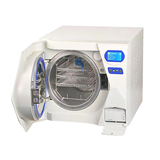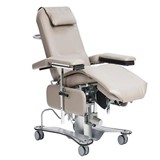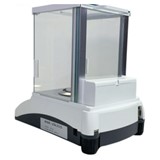Discover practical strategies to attract and retain skilled nurses in Australian healthcare. Boost workforce stability and improve patient care today.
Key takeaways
- Understand workforce challenges: Australia faces a growing nurse shortage intensified by retirement and increasing demand.
- Focus on workplace culture: Positive environments with strong leadership significantly boost nurse retention.
- Offer competitive remuneration: Salary, benefits, and flexible work arrangements are key motivators for attracting talent.
- Invest in professional development: Opportunities for upskilling and career progression reduce turnover and increase job satisfaction.
- Leverage technology and innovation: Modern tools improve workflow efficiency, making nursing roles more attractive.
- Prioritise wellbeing and mental health: Comprehensive support systems reduce burnout, a leading cause of nurse attrition.
Introduction
Australia’s healthcare system relies heavily on nurses, who make up nearly half of the health workforce. Yet, the sector is grappling with ongoing nurse shortages, with an estimated shortfall of over 85,000 nurses by 2025 according to the Australian Institute of Health and Welfare (AIHW). This shortage threatens the quality and accessibility of care, placing immense pressure on healthcare providers to attract and retain highly skilled nursing professionals.
As a healthcare manager or business decision-maker, your ability to secure and maintain great nursing staff is critical. This article explores practical strategies reflecting current Australian workforce trends, compliance requirements, and emerging best practices, helping you build a resilient nursing workforce ready for the future.
Understanding the Australian nursing workforce challenges
The Australian nursing landscape is shaped by demographic, economic, and policy factors affecting supply and demand:
- Ageing workforce: Nearly 40% of nurses are aged over 45, with many approaching retirement.
- Increasing demand: Australia’s ageing population and chronic disease burden are expanding healthcare needs.
- Geographical disparities: Rural and remote areas face even greater recruitment challenges due to limited infrastructure and lifestyle factors.
- COVID-19 impact: The pandemic has intensified workloads and burnout, accelerating attrition rates.
Case example: A regional hospital in Queensland struggled to maintain safe nurse-to-patient ratios, leading to temporary ward closures in 2023. Targeted recruitment drives combined with improved local incentives reversed this trend within a year.
Locations experiencing nurse shortages in Australia
Nurse shortages are a critical challenge across Australia, but the severity and nature of these shortages vary significantly by location. Understanding these geographical differences is essential for healthcare providers aiming to attract and retain nursing staff effectively.
Metropolitan vs regional and remote areas
- Major cities such as Sydney, Melbourne, Brisbane, and Perth generally have more nurses per capita, owing to larger healthcare facilities, better infrastructure, and more diverse employment opportunities. However, these urban centres still face shortages in specialised nursing roles, such as intensive care, emergency, and mental health nursing.
- Regional and rural areas bear the brunt of nurse shortages. The Australian Institute of Health and Welfare (AIHW) reports that regional communities often have fewer nurses per 1,000 population compared to major cities. Factors contributing to these shortages include limited access to professional development, fewer amenities, social isolation, and difficulties in recruiting qualified nurses willing to relocate.
- Remote and very remote regions face the most acute shortages, particularly in Aboriginal and Torres Strait Islander communities where culturally appropriate healthcare is crucial. These areas often rely heavily on fly-in-fly-out (FIFO) nursing staff or short-term contracts, which can affect continuity of care.
Specific hotspot regions
- The Northern Territory and parts of Western Australia consistently report some of the highest nurse vacancy rates nationally. Remote mining towns and Indigenous communities in these states experience ongoing recruitment difficulties.
- Far North Queensland and parts of Tasmania have also been flagged in recent workforce studies as areas with critical nursing gaps.
- Some outer metropolitan fringes with rapidly growing populations are beginning to experience shortages due to infrastructure and workforce development lagging behind community needs.
Strategies to address location-based shortages
Healthcare providers are increasingly adopting location-tailored approaches to tackle these disparities:
- Offering financial incentives such as relocation bonuses, housing allowances, and rural loading pay.
- Establishing partnerships with local universities and training providers to create “grow your own” nurse programs aimed at students from regional areas.
- Promoting telehealth roles and flexible work arrangements that allow nurses to provide care remotely while maintaining their local lifestyle.
- Investing in culturally safe workplaces and community engagement programs to support Indigenous health workers and attract nurses to remote communities.
Building a positive workplace culture
The quality of the work environment is a top predictor of nurse retention:
- Supportive leadership: Nurses want approachable managers who foster open communication and provide constructive feedback.
- Team cohesion: Promoting collaboration and respect reduces workplace stress and isolation.
- Recognition programs: Regularly acknowledging nurse contributions boosts morale and loyalty.
- Inclusion and diversity: Australian workplaces that celebrate cultural diversity and provide equitable opportunities attract broader talent pools.
Practical tip: Implementing monthly team huddles and feedback sessions creates a culture of shared responsibility and continuous improvement.
Offering competitive remuneration and flexible working arrangements
Attraction and retention hinge on more than just base salary:
- Salary benchmarking: Ensure pay scales meet or exceed local industry standards, factoring in the cost of living.
- Shift flexibility: Offering part-time, job-share, or flexible roster options helps nurses balance work with family and study.
- Additional benefits: Paid parental leave, professional development subsidies, and wellbeing allowances add value.
According to the Australian Nursing & Midwifery Federation (ANMF), flexible working hours are cited by 70% of nurses as a crucial retention factor.
Investing in professional development and career pathways
Career stagnation is a common reason nurses leave their roles. Providing ongoing learning and clear progression pathways can increase job satisfaction:
- Upskilling programs: Facilitate access to specialist certifications, postgraduate education, and clinical placements.
- Leadership training: Prepare senior nurses for management roles through mentorship and formal training.
- Internal mobility: Encourage lateral moves across departments to broaden skills and retain interest.
Real-world example: A Sydney-based private hospital introduced a clinical ladder framework, resulting in a 25% reduction in nurse turnover over two years.
Leveraging technology to improve workflows
Modern healthcare technology not only enhances patient outcomes but also improves nurse job satisfaction by streamlining repetitive tasks:
- Electronic health records (EHRs): Reduce paperwork and improve data accessibility.
- Automated medication dispensing: Minimise errors and save time.
- Mobile devices and apps: Allow nurses to access information and communicate in real-time.
Research from the Australian Digital Health Agency indicates that effective tech adoption can reduce nurse workload by up to 20%, freeing time for direct patient care.
Prioritising nurse wellbeing and mental health support
Burnout remains the leading cause of nurse attrition. Australian healthcare providers are increasingly recognising the importance of mental health support:
- Employee Assistance Programs (EAP): Confidential counselling and support services tailored for healthcare workers.
- Resilience training: Workshops and peer support groups to build coping skills.
- Workload management: Ensuring safe nurse-patient ratios and adequate breaks to prevent fatigue.
Scenario: After introducing mandatory mental health days and on-site counselling, a Melbourne hospital saw a 30% drop in sick leave among nursing staff within 12 months.
Compliance and regulatory considerations
Adhering to Australian nursing standards and workplace laws is crucial for healthcare providers aiming to attract and retain skilled nurses. Understanding these requirements helps you create a safe, fair, and supportive workplace that nurses value.
Key legal frameworks impacting recruitment and retention
The Fair Work Act 2009 ensures fair employment conditions, including wages, working hours, and rostering. Compliance with this legislation helps maintain a positive work environment that supports nurse satisfaction and retention.
Mandatory nurse staffing ratios and accreditation
States such as Victoria and Queensland have legislated minimum nurse-to-patient ratios to protect patient safety and reduce nurse burnout. These ratios also form part of workforce planning and accreditation standards overseen by the Australian Commission on Safety and Quality in Health Care.
Nurse credentialing and registration requirements
All practising nurses must be registered with the Nursing and Midwifery Board of Australia (NMBA) and meet ongoing continuing professional development (CPD) obligations. Supporting your nurses in fulfilling these requirements ensures a competent and confident workforce.
Workplace health and safety compliance in the COVID-19 era
Robust health and safety measures, including COVID-19 protocols and vaccination mandates, are essential to protect staff and minimise absences. Strong infection control practices contribute to workforce stability and safety.
By prioritising compliance with these frameworks, you avoid costly penalties and build a legally sound, supportive workplace that helps attract and retain great nursing staff.
Conclusion
Attracting and keeping great nurses in Australia requires a multi-faceted approach tailored to the unique challenges and opportunities of the healthcare landscape. By fostering a positive culture, offering competitive conditions, supporting professional growth, embracing technology, and prioritising wellbeing, you can build a resilient nursing workforce that delivers exceptional care today and into the future.



-160x160-state_article-rel-cat.png)









-160x160-state_article-rel-cat.png)









